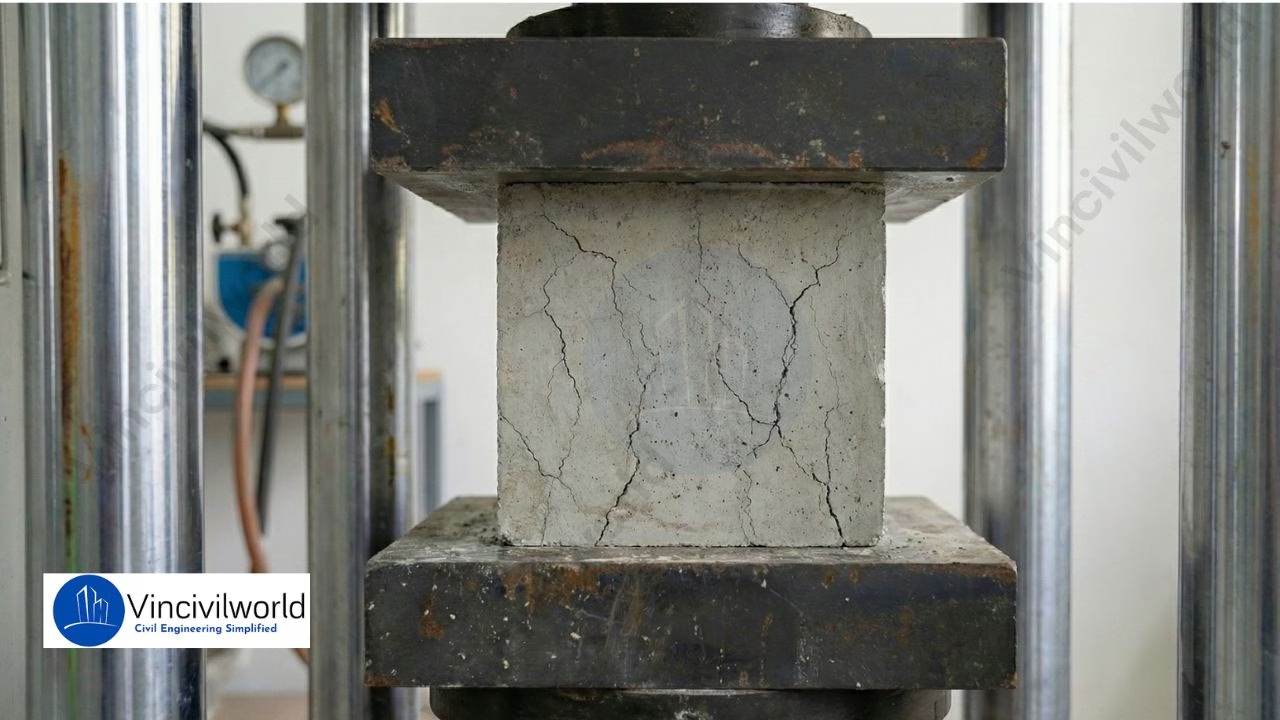Vee Bee consistometer test determines the workability of concrete. Workability depends on the compactability, stability, finishing ability of the concrete. Vee- Bee test is for finding workability of concrete.
Concrete is designed for a particular strength. The total structural stability is dependent on a good quality concrete. and that is why quality control is one of the most important aspects taken into account during the production of concrete . A little variation in water to cement ratio, ingredient proportioning, increase in slump etc will have a major impact on the desired strength of the structure which in turn affects the structural stability.
Quality tests on concrete
Following are the stages of quality tests
- Production stage quality tests ( On fresh concrete before placing)
- Hardened stage quality tests ( hardened concrete specimens)
- On structures ( tests done on the structures )
Also read : Aggregate Crushing test – Strength of aggregate
Also read : 9 lab tests of Bitumen for flexible pavements
Production stage quality tests on fresh concrete
This article is about Vee- Bee Consistometer test
Significance of Vee Bee Consistometer
The vee bee test decides the consistency and mobility of the fresh concrete and expressed in Vee- Bee seconds. As per IS: 1199 – 1959, it measures on the basis of the relative effort of the concrete to change its shape. This is the remoulding effort. The time for the complete remoulding is the workability of the concrete.
Relevant IS code
- IS: 1199 – 1959
Apparatus used for Vee Bee Consistometer
The Vee – Bee Consistometer includes of
- A vibrator table resting upon elastic supports
- A metal pot
- A sheet metal cone, open at both ends
- A standard iron rod
The dimension of the vibrating table is 380 mm in length, 260 mm in width and height of 305 mm. Also, supporting the table there is a rubber shock absorber. Under the table, there is a vibrator that vibrates electrically. The dimension of the metal slump cone is 300mm height, 200 mm top diameter and 100 mm bottom diameter.
Test procedure
- Initially fill the slump cone with four layers of concrete. Each layer should have a height of one – fourth of the cone.
- After that tamp each layer 25 times using a standard tamping rod and strike uniformly.
- Then after placing the final layer, remove the excess concrete on the top of the concrete.
- Move and place the swivel arm attached to the glass disc on the top of the cone.
- Now remove the cylindrical cone gradually in the vertical direction and note down the slump.
- Then switch on the electrical vibrator and allow the concrete to spread.
- The time taken by the concrete to spread uniformly is noted using the stop clock.
- This time is expressed in vee bee seconds.
The time for the concrete to remould is the Vee-Bee seconds. The Vee Bee consistometer is an indirect measure of concrete workability. This method is suitable for concrete whose slump value cannot be determined. ie, for dry mixes. We can get direct result through this method.




